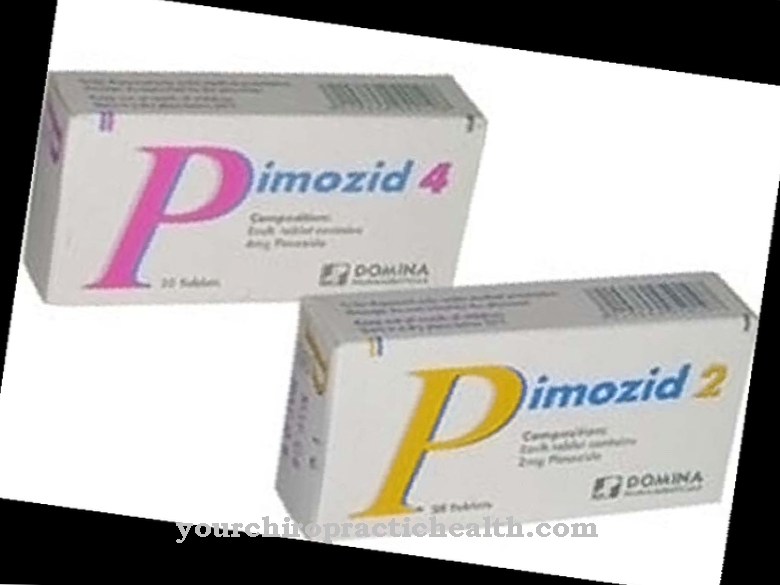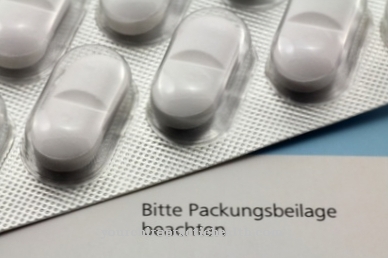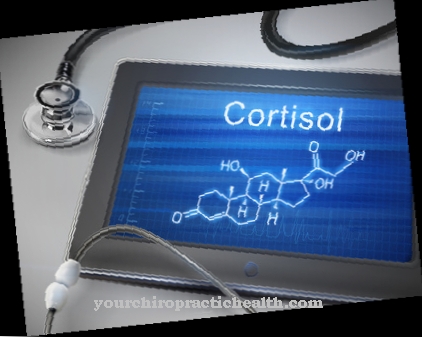Sodium monohydrogen phosphate is one of the laxatives. It is usually used together with sodium dihydrogen phosphate.
What is sodium monohydrogen phosphate?

Sodium monohydrogen phosphate also bears the name Sodium monohydrogen phosphate. To treat constipation, the active ingredient is administered together with sodium dihydrogen phosphate, also known as sodium dihydrogen phosphate. The agent is a salt made of ions that is odorless and colorless. Together, sodium monohydrogen phosphate and sodium dihydrogen phosphate form an efficient component of laxatives (laxatives). Laxatives are given when constipation cannot be effectively treated by lifestyle changes.
Sodium monohydrogen phosphate has the property of making the stool softer and thus making it easier to completely empty the bowel. The combination preparation is mostly offered under the name sodium dihydrogen phosphate + sodium monohydrogen phosphate. The product is available in pharmacies as an enema (enema liquid).
Pharmacological effect
Sodium monohydrogen phosphate, like sodium dihydrogen phosphate, is a saline laxative. This means that these substances increase the water content of the stool. The laxative is usually administered as a solution that the patient introduces into the rectum through his anus. Oral ingestion in liquid form is also possible.
If the sodium monohydrogen phosphate and sodium dihydrogen phosphate reach the hardened stool, they penetrate into it and bind the water it contains. This allows the faeces to soften, which in turn makes it easier to pass stool.
The urge to defecate is caused by the increase in the volume of the faeces. In most cases, the active ingredient is able to ensure that the bowel is completely emptied. This can also be extremely important for medical examinations of the intestine or surgical interventions on the organ. The sodium monohydrogen phosphate starts to work after approx. 5 to 10 minutes. It is therefore advisable to stay near the toilet.
Medical application & use
Sodium monohydrogen phosphate is used in combination with sodium dihydrogen phosphate to treat constipation, the causes of which can vary. Another area of application is medical examinations or operations on the intestine, which must be completely emptied of the digestive organ before they can be carried out. The laxative can also be used during childbirth.
You can find your medication here
➔ Medicines for constipation and intestinal problemsRisks & side effects
Similar to other laxatives, undesirable side effects are conceivable from taking sodium monohydrogen phosphate in combination with sodium dihydrogen phosphate. These side effects need not occur automatically for every patient. The reactions to drugs are very different from person to person.
There is a risk of electrolyte imbalance in young children from taking sodium monohydrogen phosphate. Either the phosphate concentration in the blood or the concentration of sodium in the blood of the affected child increases. The electrolyte disturbances sometimes have other damaging effects. These include increased excitation of nerves and muscles as well as cardiac arrhythmias.
If a patient already has previous kidney damage, acute kidney failure is possible. For this reason, sodium monohydrogen phosphate should only be administered if no other phosphate-free laxative is available.
Sodium monohydrogen phosphate must not be taken at all if the patient suffers from kidney problems, inflammation of the peritoneum (peritonitis), bleeding in the gastrointestinal region or appendicitis. Further contraindications are the chronic inflammatory bowel disease ulcerative colitis, changes in the large intestine, unknown gastrointestinal complaints as well as nausea and vomiting.
The active ingredient combination sodium monohydrogen phosphate + sodium dihydrogen phosphate may be used to a limited extent during pregnancy and breastfeeding. However, the weighing up between benefit and risk must be carefully assessed in advance by the doctor. In early pregnancy, a miscarriage cannot be completely ruled out due to the use of the agent. The same applies to a premature birth.
In principle, children can also be treated with sodium monohydrogen phosphate. The dose depends on the age and weight of the child concerned. Since constipation in children must always be medically clarified, a doctor should also be consulted. Interactions caused by taking the active ingredient combination sodium dihydrogen phosphate + sodium monohydrogen phosphate are also possible. If the two drugs are taken together with other laxatives, this can increase the effect.













.jpg)

.jpg)
.jpg)











.jpg)